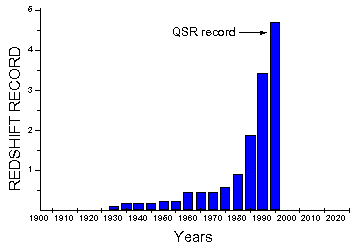
Special Astrophysical Observatory
Nizhnij Arkhyz, Karachai-Cherkess
Republic, 357147 Russia
At the end of the Century, gross deformation of our understanding of the
surrounding Universe took place and we realised that there are big
lagoons in our knowledge. There is some hope, that observational astronomy
and particularly radio astronomy may be useful in escaping from the "pagan"
state. Today, we are celebrating 100 Years anniversary (using Russian chronology:
"Thunderstorm marker"(Popov, 1896) of the first radio telescope with collecting
area about 400 sq.m. dedicated for the receiving of the electromagnetic
radiation in radio domain from the lightning in the atmosphere, that is
from the Natural source of radiation. In fact, at the end of the last Century,
two radio communication windows were opened - let us call them People-to-People
window and People-to Nature window. Both windows are of the great importance
but some problems with their interaction exist.
We shall demonstrate the fantastic break through in the second window,
and how Radio may be used in the next generation fundamental experiments,
connected with Early Universe.
Last 1996 Year demonstrated the triumph of Radio Astronomy. It was
shown that remote sensing by Radio waves of essentially whole Universe
is quit possible. Three steps were equally important in the firm establishing
of this statement.
1.Exponentially great growth of the sensitivity of radio facilities.
2.Detection of small scale CMB anisotropy.
3.Discovery that Thomson depth up to the recombination epoch is less than
1 and at least the most powerful radio population of the Universe may be
visible at any distances up to the recombination epoch; epoch from
the Singularity to the Recombination may be traced by careful mapping of
the CMB.
2.Very HZ Objects: how far they
can be?
There are more than 100 QSR at 3<z4.46 on the Sky but here we shall try to estimate the density of much more distant population. We shall use HZ USS FRII RG method of selection very distant but very old stellar system. Stellar population in QSO practically invisible due to strong gas emmission. In z>1 list of about 250 galaxies most of them are RG. Every year we have new records and it is demonstrated by Fig.1

Now radio galaxies are ahead of QSR- most distant RG has z=4.71, most distant radio loud QSO has z=4.46. But even with smaller z, we can penetrate into the "pre-QSO" epoch using classical stellar evolution models of estimation of the age of the stars in the parent galaxies, connected with the RG. Ultra- steep spectrum population of FRII RG are most popular- they happend to be the most distant. It was demonstrated by Holland group, that about 30% of RG with spectral index more than 1.3 have z>3.
How many USS RG on the SKY? We used well defined RATAN-600 selected area, 0h < R.A. < 24h, DEC=5 deg. were we have now about 500 dayly records at 5-7 fequencies from 22GHz to 1 GHz. The width of the strip depends on the frequency and effective width at the most sensitive frequency, 3.9 GHz was about 0.15 deg. In this 100 sq.deg. area we discovered 1147 radio sources (that is, about 10 per sq.deg) with limiting flux density of few mJy (RC Catalog) and they were used in the BIG TRIO project (RATAN-600, world largest radio telescope, VLA, world best radio imaging system, and 6m. Russian optical telescope, up to now- biggest single mirror instrument, for deep optical identifications). We were the first users of the most sensitive at long wavelengths UTRAO catalog before formal publication and 100% of UTRAO objects were visible at 3.9 GHz at RATAN-600. We selected USS objects with alfa > 1 and realized, that the surface density of the USS objects is by factor 100 greater, (about 1 per sq.deg.) than it was believed earlier. This statesment well visible from the FIG.2

High density region on this all sky map- RATAN-600 selected area. We can compare our result with results from other groups, see FIG.3

It is the lower limit of USS RG in our SA, because there were no long wavelength surveys sensitive enough to pick up all USS objects above our sensitivity limit. We hope to use new generation (NVSS, FIRST type) cataloges to get complete spectral information. All USS RC objects were mapped by VLA with resolution up to 0.2 arcsec, morphologically classified and identified optically at 6m. telescope. Using all information on the 250 HZ RG with knownredshifts, we estimated redshifts of our USS objects and it was found, that mean redshift for our list is about Z =2 , but 6 have R mag greater than that for the most distant radio objects, discoverded up to now (z=4.71). Moreover, we have found few objects with radio luminosity greater by factor 10, than optical luminosity of the parent galaxy. Looking at the z>1 list of RG with measured z and with measured R, we could not find any object with radio luminosity greated then optical luminosity even by 1 mag. It well may be, that these pecular objects belong to new exremely distant LBO (Lyman-Break-Objects) population with z>6, with 912A break redshifted from the R filter band. If it is the case, we may hope, that there are about 1000 objects on the sky with well developed FRII structure and giant black holes in the parent stellar systems at z=6.
We have now multi-color measurements for about 30 objects of our list and estimated "color redshifts" and ages of stellar systems, responsible for the formation of out FRII radio sources. This age have to be substructed from the age of the Universe, corresponding to the photometric or color redshift of the object to estimate the cosmic time of the first massive stars formation process. Preliminary resuls are shown in the FIG.4

It is clear, that the MODE
of age distribution appearing in the 1 Gy bin, "negative", that is before
Big Bang, cases just demonstrate the accuracy of our estimates. At the
same time, we should remind, that for the radio loud objects this approach
can give us only the lower limit of the stellar system age, because it
is generally accepted, that the merging and tidiel disturbancies may be
of a great importance in the formation of the FRII objects, the same may
be trigger the secondary stars burst events. Even more, for FRII objects
we should find time for formation of the dense galactic core stellar claster
and (only then) for erection of the billion solar mass black hole
to feed the most energetical in the Universe radio structure. In classical
picture, it will take just 1 Gy. If we add to that the time for the formation
of the 10^12 solar mass giant ellipticals (normally connected with
FRII RG) from the less massive objects, we have to think about alternative
ways of formation FRII gE and giant Black Holes inside, e.g. (Rees, 1984).
Alternatives include quick formation of these objects just after
separation of matter from radiation field. pom s the in the
Let us summarise
this part: present day observation indicates, that Universe has galaxy
population at z>>1 and ( may be) even at z>100-300. Is it possible to observe
them? In the next 2 parts we are going to give answer to this question.
3.Flux density estimation from
Very High Zet (VHZ) objects.
Let us put well studied HZ RG at different Z up to recombination epoch and calculate the flux density from this RG without any other assumptions using standard cosmology corrections, e.g. (Longair, 1974). Object like 1425+635 with z=4.25 will give us FIG.5

This objects
belong to the classical FRII Cygnus-A population or the Radio Sky. We can
see, that even with present day sensitivity records (VLA, 1-2 micro-Jy)
it is possible to observe this object at any redshift up to recombination
epoch if
a)there are objects at these redshifts
and
b)the Universe is transparent up
to recombination epoch.
The situation
may be even better if we take into account two important processes, which
can operate at VHZ: dust emmission and Inverse Compton (I.C.) effect (scattering
of the relict photons by the relativistic particles in the radio structures).
First process was considered in (Parijskij, Korol'kov, 1986) and many times
later. Both processes results in the strong positive K- correction (flux
density increases with z instead of decreasing). We demonstrate this effect
for Cyg-A object were 100- micron peak of the dust emmission was discovered,
see FIG.6

Even with 1mJy sensitivity this object may be observed up to recombination epoch. IC effect may very important in XRAY and optical domains. It is easy to show, that for z>4-6 IC luminosity dominates over the radio luminosity if the size of the radio structure is as big as normal for the FRII RG population. Again, due to (1+z)^4 factor in the photon energy density, sky may be covered by new population of XRAY objects if sensitivity of the observations will be comparable with AXAF observatory. In optical domain we shall see "turnover" effect-at Z> Zmax brightness of the object will increase s with Z. We demonstrate this effect in FIG.7

We can see, that,
again, this type of VHZ objects may be observed with present day optical
facilities (with the same "If's" as above).
Exponential growth
of the sensitivity of the radio facilities well established, and all attempts
to predict the "saturation" effects failed. We demonstrate this by FIG.8

We had 1mJy records only 10
years, now we have 1 microJy record (VLA, 1996) and nano-Jy level is visible
with 1 sq.km. array (SKAI project) In the first quarter of the next millenium
our "Horoscope" predict pico-Jy level (but no real projects of that kind).
We may notice, that communication industry predict the number of personal
radio communication facilities comparable with the total population level
(more than 10 billion). They will be interconnected through computer network
and may be used as the new generation amature aperture synthesis array
with collecting surface about billion sq.m. if civilization will be interested
in the Science more than now.
It is interesting,
that in all domains there are great number of projects for new generation
facilities, including 1 km 900 sq.m optical ground based adaptive array.
This part may be also easely
summarized: even present day instrumentation adequates to the sensitivity
requirements to pick up at least some kind of the Early Universe population.
New generation instruments can extend the size of the visible up to recombination
epoch population greatly.
4.Universe transparency problem.
We were involved in the attempts
to see the objects at recombination epoch, z=1000, directly in the radio
window from 1967, just after Silk suggestion to observe protogalxies. As
usual, we had only upper limit on the CMB anisotropy at all scales, from
18 arcsec to several degrees, greater than the horizon scale at the epoch
of recombination. We began with Big Pulkovo Radio Telescope (130m strip)
and working up to now with RATAN-600, using the same strip survey, which
we used for the detection of the distant radio sources. At the end of 1996
we had about 400 dayly records iat several frequencies and in the different
modes of observations (and in different azimuths), see FIG.9

Only at the sub-degrees scales
we had seen some extra noise above simple power low spectrum, which
can be easely atributed to the small scale Galactic noise and confusion
effects due to the unresolved background radio sources. We demonstrate
this noise at 3.9 GHz in the FIG.10.,

It should be mentioned here,
that signal-noise ratio was much greater than 1 everywere, reaching more
than 10 (more than 100 in energetical units, Cl, Legendre polinom terminology).
It is demonstrated by FIG.11
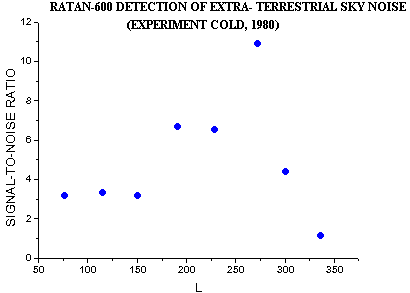
We can try to convert our one- dimentional Fourie spectrum into the standard Cl values, see FIG.12

Error bars here reflect only random errors, connected with receiver and atmospherical noise. It is just the noise, visible in the difference between two independent sets of observations. Extra noise above COBE power spectrum (2<l<<10) well visible in the region 250 < l < 850 with effective amplitude about up to 40 micro K. The main uncertainties were connected with the interpretation of this extra noise. Galactic synchrotron and free-free emmission and confusion effect were the main alternatives of the the CMB anisotropy. The systematic errors connected with "cosmic variance" limitation should also large- less then 100 pixels were used in FIG.12. The very fact of extra noise at these scale was established in early 80th and was published in 1984 (see (Parijskij, Korol'kov, 1986) for references), but only now we may reject all alternatives exept CMB anisotropy. Indeed, there are now great progress in mm and submm observatioins of the sky anisotropy and only last, 1996 resulted in the acknowlegment of the reality of the extra noise at the sub-deg. scales, in 200<l<800 region and with amplitude about 30 micro-K above COBE level, see FIG.13.

The main alternative of CMB anisotropy in this frequency region was Galactic dust emmission. Now we can reject it also as very unprobable- at submm, mm and at long cm wavelengths we have extra noise in the same 200< l < 800 interval and of the same amplitude. Even with 30% errors in both groups of measurments we can proof the black body spectrum of the extra noise at the sub-horizon scales; it is demonstrated by FIG.14.

If we compare the observed
amplitudes and scales with predictions of practically all variants of the
Theory of Early Universe, we unescapable came to conclusion, that we really
see recombination epoch; moreover, the Tompson depth of the whole part
of the Universe from the observer to the recombination epoch is much
less then 1. At present, we estimate it as less then 0.1 just from
comparison of present day observations with most popular variants of the
Theory.
It is interesting,
that from part 1 and part 3 results we can eliminate the epoch
of the secondary reheating in the Early Universe. Indeed, we have shown,
that there is population of very active objects at z> 6 and may be even
at z>>6. These population has very powerfull ability in ionization
of intergalactic medium; in the very popular unified model, FRII RG are
QSO objects with "wrong" orientation. We can calculate the Stremgren sphere
for our USS RG and, using our space density estimation from part 1 consideration,
find redshift at which Stremgren radius will be smaller then the distance
between our USS FRII RG objects if there no strong evolution effects. The
result will be model- dependent, but we cannot extrapolate the estimated
space density of VHZ object too far due to the high transparency of the
universe (part 3). It means, that we have upper and lower limit on the
epoch of secondary ionization. At present , we think it is somewhere inside
6 <z< 30 interval, see FIG.15.

As far as very early collapsed
object concerned, we can also eliminate the fraction of that type
of object; during collapse of one barion about 5000 UV photons appearing
and, again, small optical depth up to recombination epoch strongly eliminates
the number of such events. FRII RG may be just exception which does
not change the transparency of the very Early Universe (z>100-300).
We can resume this part:
we are sure now, that Universe is transparent up to recombination epoch.
We are also sure now, that Universe was neutral, non-ionized from
z=1000 up to z<30 in the small barion content Universe consistent with
primordial He/H ratio (Omega barion about 0.01) and up to z<3 in the
Universe with Omega barion=1. Last variant seems disagrees with observation
of z>5 objects and do not agrees with our estimation of the density
of USS FRII RG at z>>1.
Small Tomson depth means
big depth in the neutral hydrogen Universe. Objects with z>6-30 cannot
be observed and new method of redshifts estimates have to be used. Two
variants are visible from the discussion in part 2 (100 micron peak, IC
effect; the ratio of Radio to IC fluxes are proportional to the (1+z)^4
). Dubrovich suggested to use He and Li instead of H many years ago, see
Dubrovich 1997 for referencies.
5.1.VHZ objects.
We hope to have multi- color photometry
for all objects in the RATAN-600 USS FRII RG list and direct spectroscopy
of the most interesting objects. We shall try to trace the efficiency of
this approach at the lower level of flux density using at least NVSS data
for our strip. With surface density about few per the horison scale (2
deg.) we can check the LSS predictions, which are very different at z>3
for different scenaria. FRII RG very often connected with galactic clusters
(70%) and this population may be used for mapping of the LSS. Resolution
of the RATAN-600 just enough for observation of
S-Z effects in the distant clusters,
marked by the distant RG. In fact, first observation S-Z decrement
was done with RATAN-600 type radio telescope in 1971 (Parijskij, 1972).
This effect does not changes under Lorents transformation in the Reley-Jeans
region (amplitude of the decrement is the same at any z). At the same time,
multi-frequency detection at both side of the Planck spectrum can be used
for determination of the redshift of the cluster without spectroscopy.
It is clear now, that there is new class of sky objects- S-Z "dark spots"
without optical and XRAY counterparts (Lasensby, this volume) and for them
only radio measurments are possible.
5.2.CMB anisotropy.
We are going to concentrate
ourself on the "Sakharov Oscillations" scales (1deg- 0.1deg) and on the
secondary
effects at smaller scales, up to
the RATAN-600 resolution limit (few arcsec). The main limitation for the
ground based experiments are connected with the atmosphere noise. We shall
show here, that it is not the case when the scales under investigations
are small enough and (or) the size of the dish is big enough.
There are at least 2 well known
ways to eliminate the atmospheric noise: beam switching and multi-frequencies
observations are among the most popular one. The problem is , that very
often even the residial noise is much greater, then the receiver noise
alone. Without any atmospheric filtration best modern receiver has noise
by 100- 1000 times less, then atmospheric one, see FIG.16

Here we present bad weather
case at 1.38cm with RATAN-600 radio telescope, simple single beam
scan in the transit mode. Below-receiver noise only after integration on
the time scale, corresponding to the polinom Legendre scale. Even for very
small scales atmospheric noise dominates.
CMB anisotropy has spectrum
very different from the atmosheric one and using even 2- frequencies
method we can subtruct the atmoshere. For small dishes it can help but
not greatly. For big dish suppression is much greater. We demonstrate the
difference by FIG.17 and FIG.18


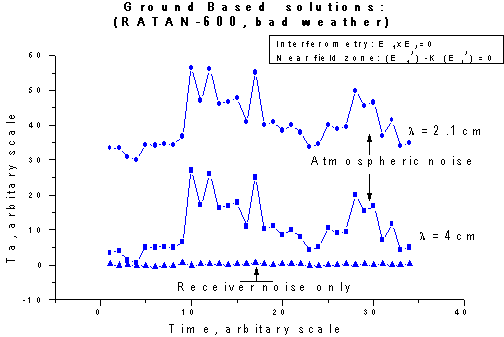
Due to the same reason simple beam switching is much more effective for the near field zone case. Appropriate formalism was developed for both cases many years ago by Pulkovo group, see, e.g., Kaidanovski et al, 1982 and early referencies there. Using this approach and much more accurate measurments of the atmospheric noise structural function (see, e.g., FIG.20)

it is easy to predict the residial
noise if different scales we observe with different dishes, see FIG.21

From this type of consideration we can find the boundary between Ground based and Space based experiments on the plane "scales-telescope dimentions", see FIG.22.

Unusual requirements
for the Ground based observations- it is much better to have telescope
size much greater, than you need to just to resolve the scale under investigations.
From the last figure it is clear, that all scales greater then about
1 deg. may studied from the Space only, but all scales smaller than 1 deg.
may be studied from the Ground as well as from the Space!
That important
result was used to clearify the role of the RATAN-600, world biggest reflector
type radio telescope, in the future CMB anisotropy measurements: high l
part of the space spectrum at the wavelengths, which penetrates through
the atmosphere.
How far we can
be from the "optimum frequency" for CMB anisotropy measurements with
highest sensitivity? Greatest unsertainties connected with the Galactic
noise. We cannot improve data on the dust emmission effects, but we may
use our 3.9 GHz results to make our own estimates of the upper limit of
synchrotron and free-free Galaxy noise at any frequency and at any scales
up to the RATAN-600 resolution limit, 1 arcmin. Indeed, big signal-to-noise
ratio observed at RATAN-600 at 3.9GHz at high Galactic latitude may have
some contribution from the thermal, nonthermal Galaxy radiation, discrete
sorces, CMB anisotropy. Let us suggest, that only thermal free-free Galactic
noise responsible for the detected signal at sub-degrees scales, see FIG.9,10.
It hives us upper limit of the f-f radiation at any other frequency after
correction for the spectral index 2.15 in brightness temperature. The same
may be done for synchrotron part of the Galaxy emmission. Our measurments
at 3.9 GHz were by far the most sensitive at the sub-degrees scale
(at so low frequency) and we are happy to inform, that upper limit of Galaxy
background at least in the well studied region (12h < R.A. <13h,
DEC=5 deg is below 1 micro-K at the scales of the acaustic peaks in CMB
at all frequencies above 15 GHz- 30 GHz, see FIG.23

Main conclusion from the
last section: we can observe CMB anisotropy with sub-microK sensitivity
at sub- degrees scales
from the Ground with big enough
telescopes like RATAN-600 at frequencies about 30 GHz. This frequency is
free from the dust problems as well.
6. "Sakharov Oscillation"
project.
There are many interesting aspects of observations of the CMB anisotropy at any scales, including l=2 and even l=1 region, which may be used for absolute calibrations. But amount of information, which connected with the sub-degrees scales, l>200 is so large, that most groups are looking for the next generation experiments dedicated for sub-degrees scales. Sakharov A.D., 1965, was by far the first, who had noticed the possibility of existence some kind of acaustics oscillations in the space spectra of CMBA. Many papers in Russia were connected later with this fenomena in very different cosmological scenaria (e.g., Zeldovich, Novikov, 1975) but much more undrestanding of the importance of this region not only for the cosmology, but also for High Energy physics appeared last years, due to high quality modeling and analitic culculations in USA, Japan and Europe. These oscillations (in Russian terminology it is "Sakhrove Oscillations" phenomena) connected with competition of different simple classical processes in the multi-components fluid (barions, electrons, photons). All attepts of gravitating barion component to collaps (with electromagnetically connected electron component) are prevented by the photons pressure, which were dragged by electrons through the Compton interaction and (after some kind of "overshooting") collapsed region begin expand, if the mass of the collapsing regin is above the Jeans mass. This process start much before the recombination epoch, at z=100 000, and many features of the very Early Universe including vacuum stages are reflected in this oscillations (see, e.g., (Hu et al, 1997)). Every observer understands, that if each peak carries different information, it is possible to measure about 15 independent parameters from even crude estimation of position, amplitude and size of all 5 predicted by theory peaks above COBE Cl level. In some projects, there is suggestions to solve HE and Cosmology problem using these obesrvations only. A.D. Sakharov had nice contact with Ya.B.Zeldovich team and after Zeldovich death was deeply involved in the formulation of the "Cosmology and MIcro-Physics" program. In fact, it was his last scientific "love" and his last paper was devoted to organisation of this program where about 40 Russian (and FSU) groups were collected in coherent action. Ground, Uderground, Underwater and Space based experiments were interconnected in this big project. To be understandable for as broad layer of the society as possible, we have the following simliefied explanation of the main targets of "Sakharov Program":
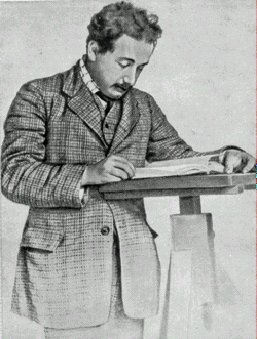 |
BEGINNING OF THE CENTURY:
AT ALL... What Universe consist of?
|
|
 |
Below we present formulation
of the Ground Based part of the much more general "Sakharov Program", which
connected with the next generation
of CMB anisotropy experiment at RATAN-600 dedicated for the "Sakharov Oscillations"
scales, 0.5 deg- 0.1 deg. and titled by this phenomena- "Sakharov Oscillations"
Project.
We are using the following
pecular features of RATAN-600 radio telescope.
Main Scientific Objectives
:
Measurments of
the amplitudes, sizes and positions of the maxima in the space spectrum
domain of all CMB anisotropy peaks in the 10 < l < 10 000 region
with few percent accuracy at the dust free side of the Galactic window.
Estimation of
the epoch of the secondary ionization using small scale "secondary
effects".
This project
is the complimentary one to the next generation Spacebased missions.
| Telescope | RATAN-600, biggest reflector type system |
| Main wavelength | 1 cm |
| Mode of observations | Dual beam focal field array |
| Number of receivers | 2- First step, 16- second step,
512- third step (unaberration muximum) |
| Receiver noise per pixel | 1 step- "COBE" level
2 step- "PLANCK" level 3 step- 1 microK level |
| Receiver temperature | 17 duirung the 1 step. |
| Receiver Technology | HEMT |
| Atmosphere noise filtration method | near field zone multi-feed and multi- frequency solution |
| Synchrotron and Free-Free Galaxy noise filtration | multi- frequency cleaning using available 7 frequencies matrix receiver system in 1- 100 GHz band. |
| Angular resolution at the main wavelength | up to 5 arcsec, 7 arcmin for the Tb=Ta regime. |
| Time of evaluation | 1998- 2004 |
| Head Organization | Special Astrophysical Observatory
of the
Russian Academy of Science (SAO RAS) |

We need 5 Years of observations with
single pixel (one feed) mode to get 25 microK level per pixel. This time
may be proportionally shorter with matrix type feed system, which
is under exploration now. All possible variants for 3 steps (or variants)
of realization of the observing program are shown at FIG.25.

One quarter of the RATAN-600 Ring telescope (physical aperture 5000 sq.m.,
450m x 11m with accurate central 450m x 7.4m) with special secondary mirror
will have this program as the first priority one up to the end of the program.
National
colour of the project is well understandable. 100 Years ago A.S.Popov opened
the "People-to-Universe" window and made the first radio telescope. A.Friedman
(1922) was the first who suggested the expanding Universe. G.Gamov,
Friedman student, was the first who calculated CMB Black Body
radiation. Ya. Zeldovich and I.Novikov (1968- 1975) were leading theorists
in the CMB and modern Cosmology, D.Kirgnich and his student A.Linde with
A.Starobinskij are responsible for the theory of Inflating Universe in
the most popular now form. First ( unrecognized) direct measurments
of the CMB radiation was done and published by Tigran Shmaonov at Pulkovo,
1956; first most stringent CMB anisotropy measurments were done using RATAN-600
prototype instrument at Pulkovo in 1968 etc.
We are looking
for partners abroad, and Spain with Danish professional Groups happened
to be interested in the project, we are looking for contact with PLANCK
and MAP groups and we are sure, and we are sure, that our results will
be useful in the interpretation of the data of these huge next century
projects. In fact, our project is complementary oun to all future Space
missions, being the only high resolution project at the dust free side
of the Galaxy window, where only free-free emission may give some troubles
but, as we have shown, at sub-mK level. Position of our Project in the
Galactic window may be seen from Fig 27.


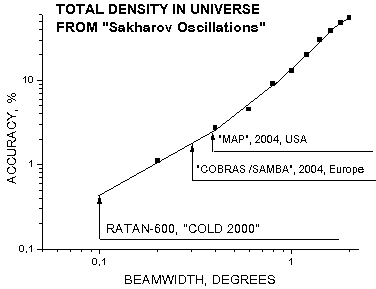

Acknowledgements
This work partially supported by the RFFI grants 96-02-1697, COSMION, "Astronomy" grants 1.2.1.2., 1.2.2.4 and VUZ-RAN project N574.
Popov, A.S. (1897) Electrician 40,
1021
Parijskij, Yu., Goss, W., Kopylov,
A., Soboleva, N., Temirova, A., Verkhodanov, O., Zhelenkova, O., Naugolnaya,
M. (1996) Investigation of RATAN-600 RC radio sources, Bull.Spec.Astroph.Obs.
40,5
Parijskij , Yu., Korol'kov, D. (1986)
Experiment Cold:First Deep Sky Survey With RATAN-600 Radio Telescope, Sov.Csi.Rev.Aph.Space
Phys., 5, 39-179
Sakharov, A.D. (1965) Early stage
of Universe expansion and origin of matter inhomogenities, JETP (Journal
of Experimental and Teorethical Physics) 49, 345-358
Longair, M. (1974) Confrontation
of Cosmological Theories with Observational Data, Reidel, Dordecht
Parijskij, Yu.N. (1972) Discovery
of the hot gas in COMA claster, Astrophysical J., (Russian) 47,1322-1338
Dubrovich, V.K. (1997) Doctor
Thesis, Special Astrophysical Observatory RAN
Kaidanovski, M., Korol'kov,
D., Stotski, A. (1982) Suppression of Atmospheric Radio Emission fluctuations
in Radio Astronomical Observations, Astroph. and Space Science 82,
317-341,
Zeldovich, Ja.B., Novikov, I.D.
(1975) Structure and Evolution of the Universe, Nauka, Moskow
Rees, M. (1984) in Audouze and T.T
Van (eds), Formation and Evolution of Galaxies and large scale Structure
in the Universe, Dordecht, Reidel, p.271
Hu, W., Sugiyama, N. Silk, J. (1997)
The physics of Microwave Backgroud Anisotropies, Nature 386, 37-43
Shmaonov, T. (1957) Proceedings
of NII MAP (in Russian) 2, 40